-
Car Reviews
- All reviews
- Midsize SUVs
- Small cars
- Utes
- Small SUVs
- Large SUVs
- Large cars
- Sports SUVs
- Sports cars
- Vans
Latest reviews
- Car News
-
Car Comparisons
Latest comparisons
- Chasing Deals
We’ve been given a taste of Toyota’s hydrogen-fuelled internal combustion Hiace prototype; check out our first drive impressions below
If you’d taken the decals off Toyota’s hydrogen Hiace prototype you’d be forgiven for wondering what all the fuss is about. Afterall, without the bold blue markings proclaiming its hydrogen-fuelled heart, it looks exactly like a regular old (new) Hiace.
However, the fact it shares so much in common with the regular Hiace is also kind of the point according to Toyota.
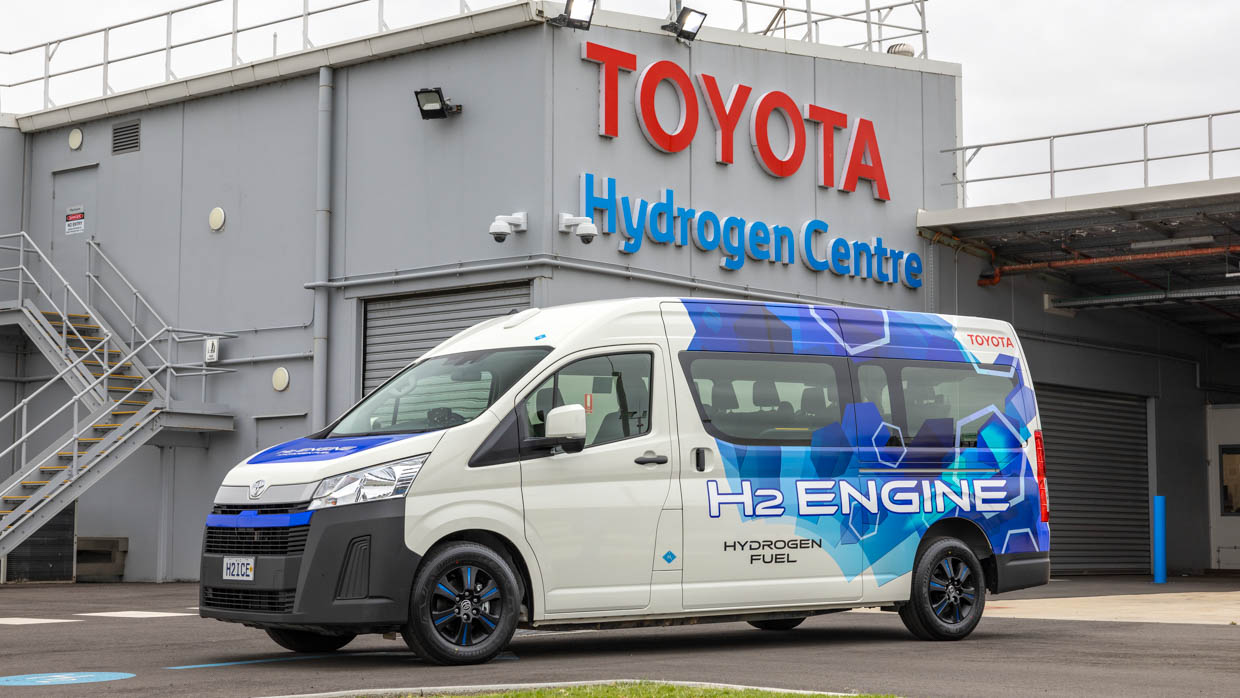
Powered by a hydrogen-fuelled internal combustion engine – a twin-turbo V6 no less – the 12-seater Hiace van prototype is a big deal for the carmarker that has been evangelising its “multi-pathway” approach to reducing emissions.
Toyota began its foray into development of the engine technology back in 2017 before debuting a hydrogen-fuelled Corolla race-car powered by a modified GR Yaris engine back in 2021.
Fast-forward to 2023, and the Hiace prototype is the closest we have come to a viable version for commercial production.
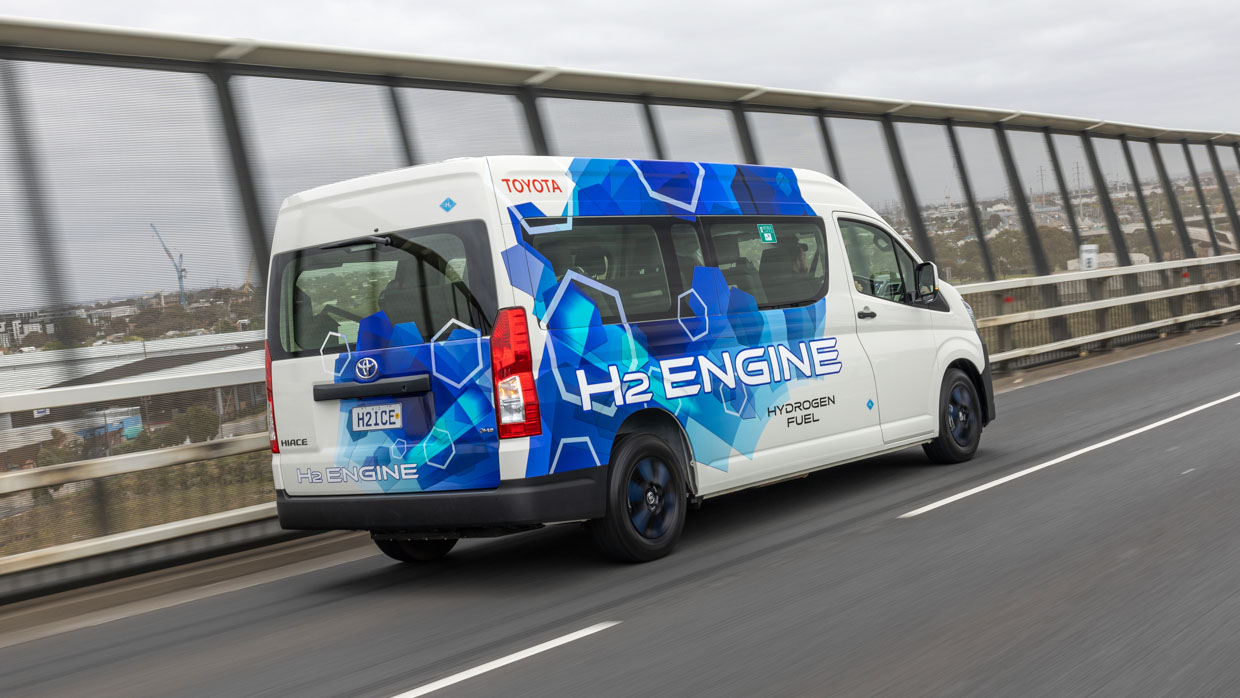
With the automaker banking on hydrogen technology like this to play at least some role in a lower-carbon world, is Toyota on the money? And what do its latest efforts with this new tech preview for the future?
Last week, Australian media were the first in the world to be given the chance to see Toyota’s newest prototype in the flesh, hear from its engineers, and take it for a spin around its Altona Melbourne proving ground to get a taste of the vehicle Toyota would like to see being driven on Aussie roads. So what was it like?
The Hiace prototype shares its lineage with a number of close siblings in the broader Toyota lineup, namely: the regular Hiace, both the Land Cruiser 300 and Lexus LX600 four-wheel-drives, and also Toyota Mirai hydrogen fuel-cell electric vehicle (FCEV).
Most importantly, the Hiace has undergone a heart transplant – gone is its standard 2.8-litre four-cylinder turbo-diesel engine, replaced by the familiar 3.5-litre twin-turbo V6 that Australian buyers will recognise from the LX600 and which is also available with the Land Cruiser 300 overseas (we only get the diesel powered version of that in Australia).
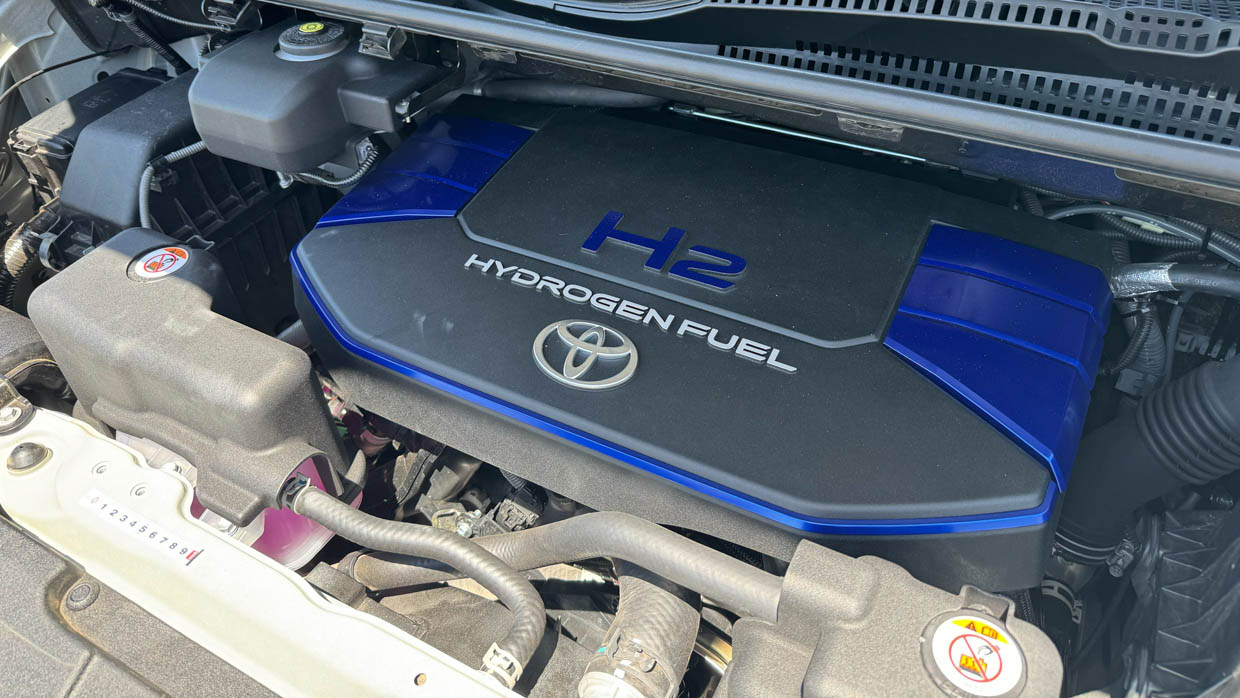
Toyota says that the engine featured in the Hiace is virtually the same, with the only modifications being a change to the fuel injectors to enable it to take hydrogen fuel.
Other than the small modifications to the engine, the Hiace functions like a regular petrol vehicle, with power sent to the rear wheels through a 10-speed automatic transmission that’s also been taken from the two aforementioned four-wheel drives.
However, one key element that does set the Hiace prototype apart from its diesel-powered siblings are the three hydrogen tanks that it has accommodated under its floor, similar to those in the Toyota Mirai.
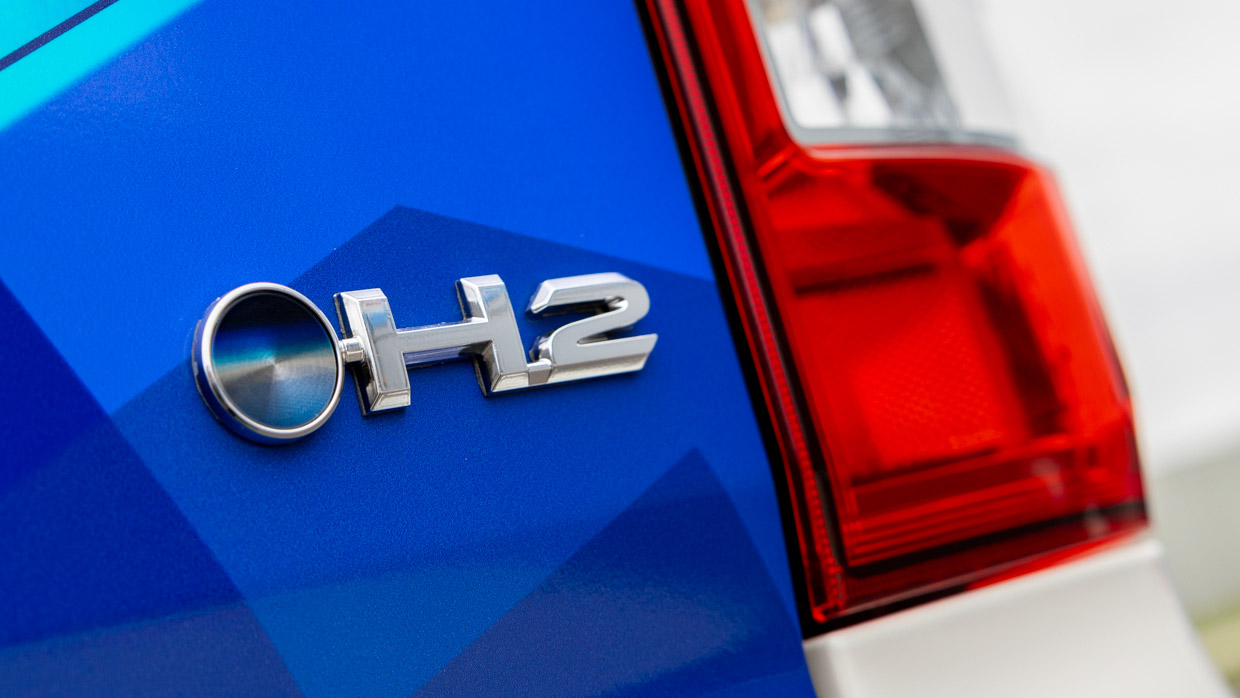
Though unlike the internal combustion Hiace, the Mirai employs a totally different philosophy, using hydrogen to power a battery and electric motors. However, while the Mirai has a claimed range of 650km – and has also set a significantly higher world record of 1340km – the Hiace, with a total capacity for 141-litres of hydrogen, delivers a range of less than 200 kilometres in its current prototype form.
Like the Mirai, however, the Hiace also has a five-minute refuelling time – one of the technology’s key advantages, although this doesn’t consider the current lack of suitable hydrogen fuelling infrastructure as a basic requirement.
In terms of power output, the Hiace prototype delivers 120kW and 354Nm, which is a considerable drop from the 305kW and 650Nm. It’s also less than the regular Hiace diesel, which makes for 130kW and 450Nm.
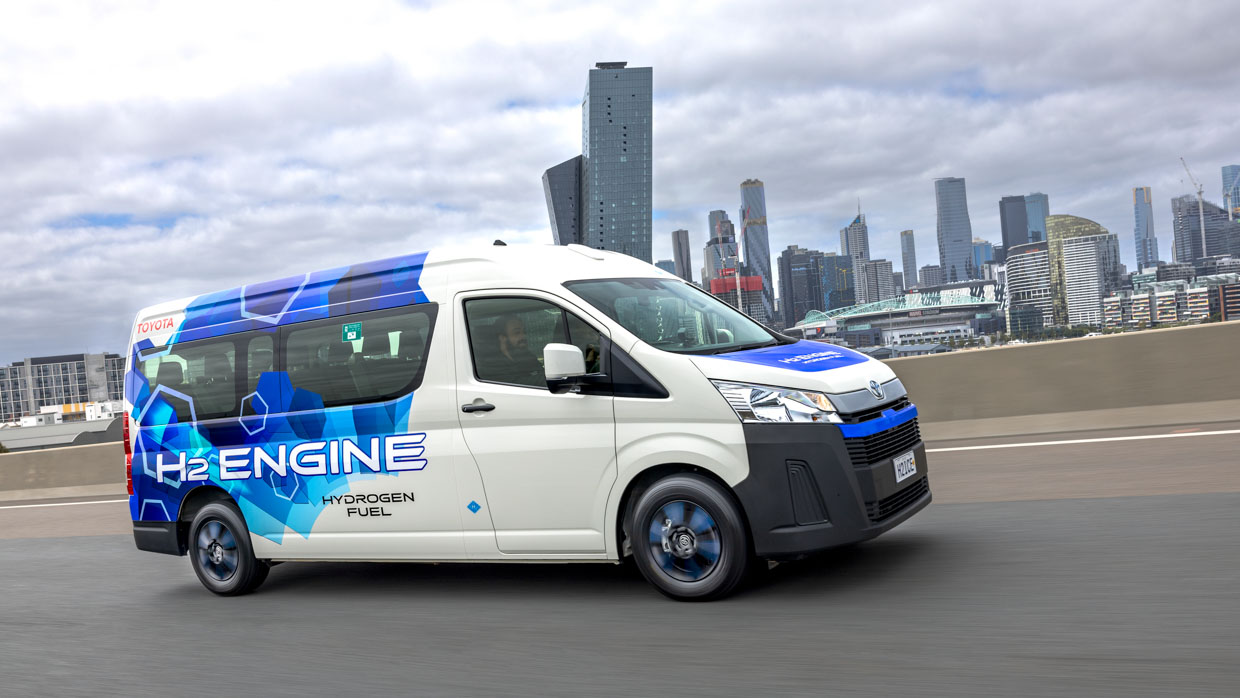
Importantly, the hydrogen-fuelled Hiace has “almost zero” CO2 emissions. However, there are small amounts of nitrogen oxide (NOx) produced during the ignition process, though Toyota says these have been reduced to meet Euro VI standards.
Toyota has also been open about the fact that the engine – which has a lower output and tune for its testing phase – is far from its final form.
The brand has said that it’s looking at further enhancements with regard to hydrogen storage, improvements to combustion, and potentially the addition of hybrid tech – all of which would all go some way to alleviating the current power drop and boosting range.
We know it looks like a regular Hiace from the outside, but what’s it like when you hop inside the hydrogen Hiace? Well, it’s pretty much the same.
Being a prototype there are one or two small telltale signs that give away its hydrogen-fuelled ‘test car’ roots such as a little monitor on the dash used to track testing data, and a cool little red button which customers involved in the development trial press to pin-point and log key moments of feedback for the engineers to analyse.
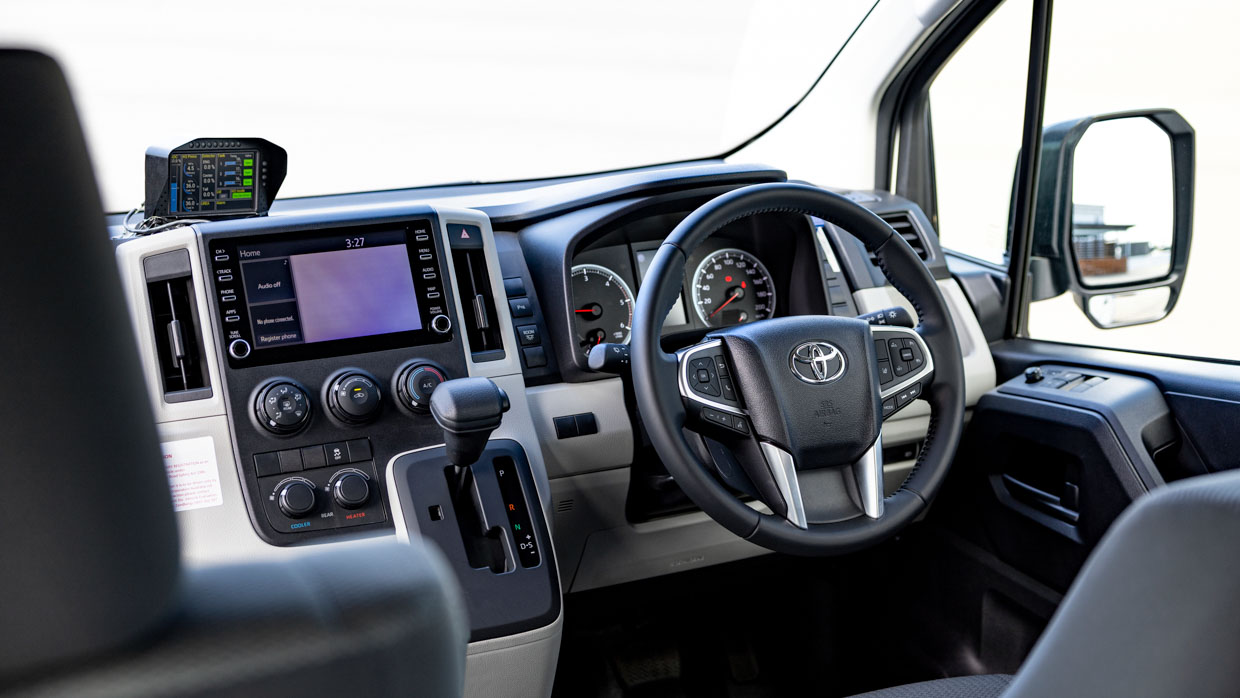
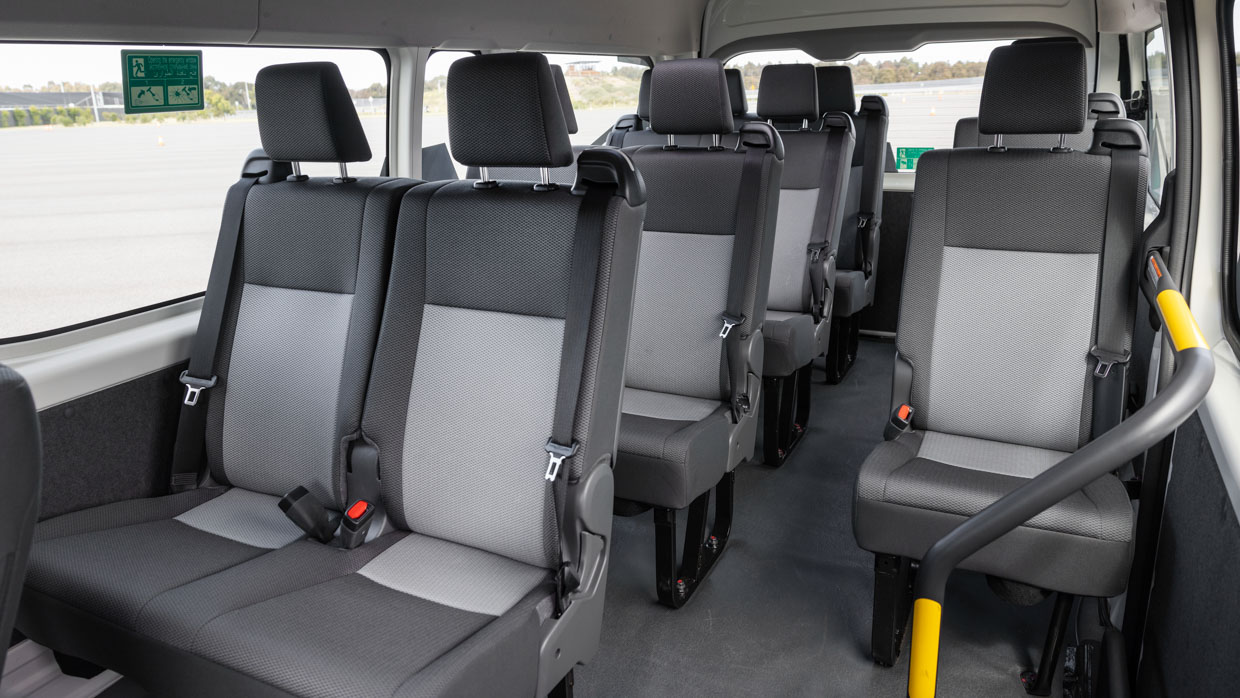
Other than that, I didn’t notice any changes or compromises to interior space or ergonomics as a result of the conversion – so if you’re someone used to driving the regular diesel version, then getting accustomed to the Hiace prototype’s functional and familiar layout won’t be difficult.
In fact, Toyota said that one of the key reasons the Hiace was chosen as a prototype was due to the seamless packaging opportunities afforded by its design, which could accommodate the hydrogen tank layout without encroaching on cabin space or payload volume.
Being handed a traditional key to switch the ignition on immediately sets the scene for the simultaneously old-school yet future-focused tech that we’re about to experience – there’s no electric push button start here.
The engine burbles into life in an audible experience not dissimilar to turning the key on any petrol-fuelled vehicle. Then, our short drive around Toyota’s Altona proving ground begins, and the immediate impressions of familiarity continue through to the driving experience.
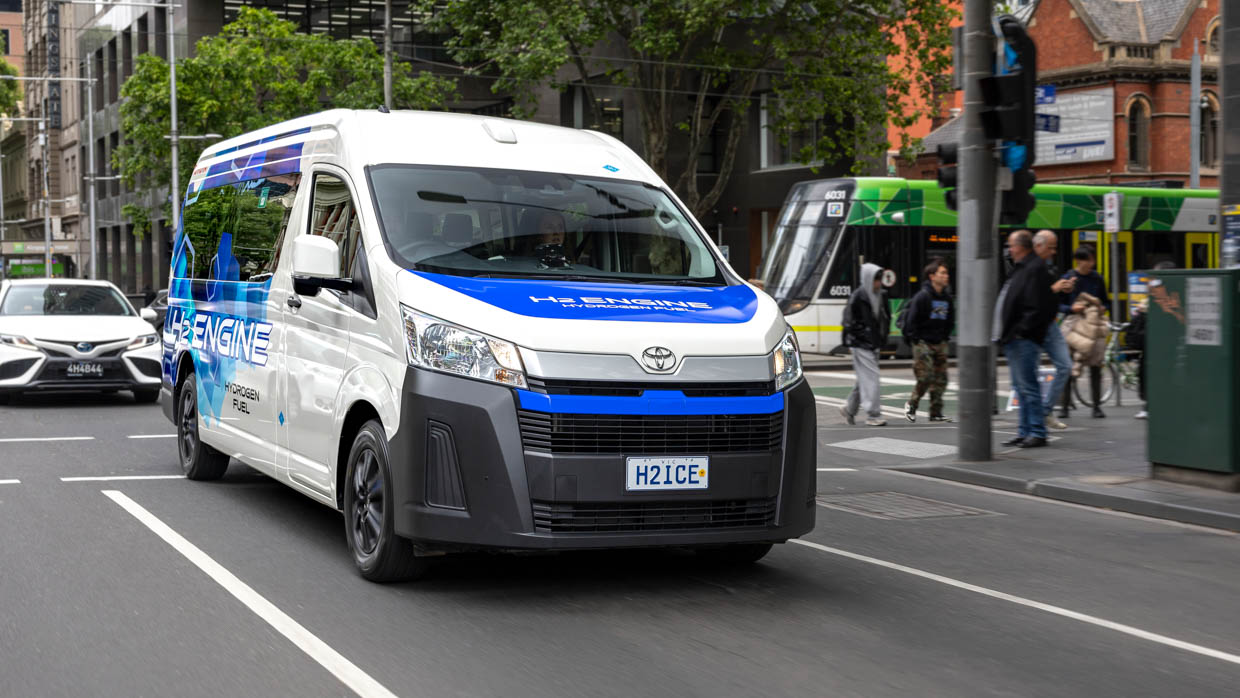
Ultimately, the Hiace drives like you’d expect an internal combustion car to drive – because, well, it is an internal combustion car. That being said, are there any key differences?
Given the absence of its regular 2.8-litre turbo-diesel motor, the force-induced petrol six’s sound is obviously different and perhaps slightly quieter and less gruff than you’d expect to find in an oiler van.
Further to this, one wouldn’t expect the Hiace to set any speed records any time soon. Noting that speed is not the remit of a commercial van like this, the reduced outputs of the 3.5-litre V6 were felt when giving the accelerator pedal a firm push, with the feeling of some turbo lag at points.
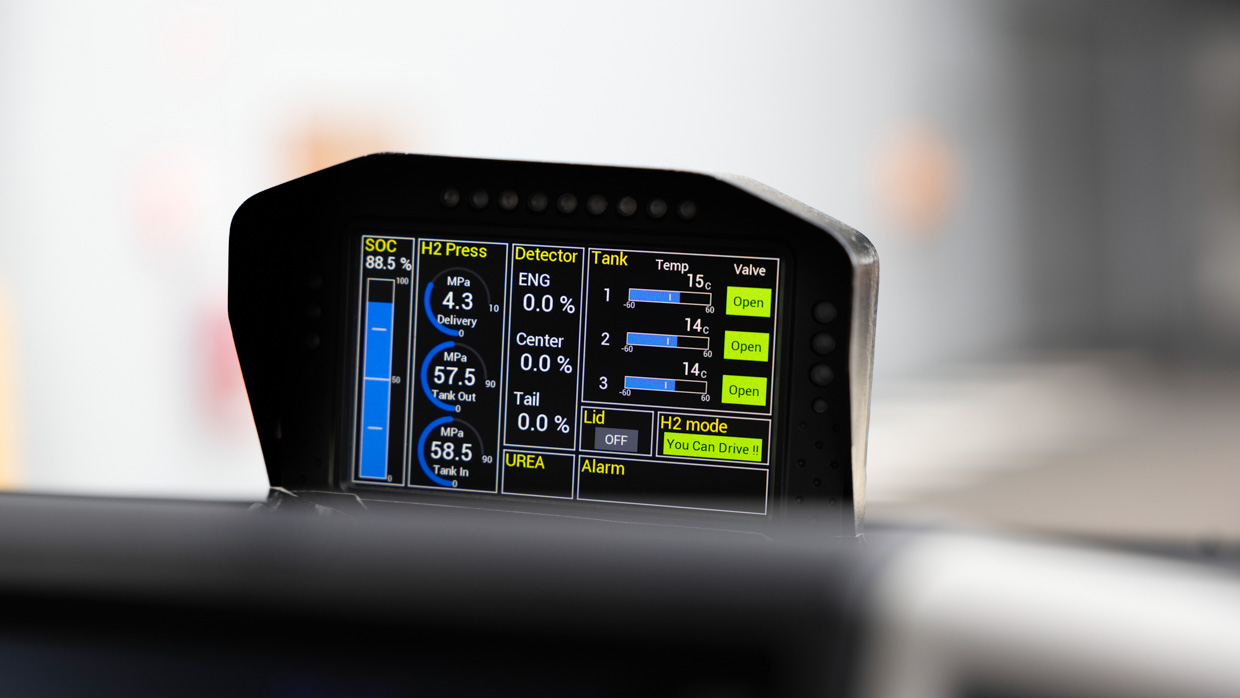
Aside from this, the overall drive experience felt smooth and ‘normal’.
There were few ‘wow’ moments, at least during the limited drive time experience, but that’s possibly exactly as Toyota wanted for a car which has a clear function for a clear set of buyers it intends to target.
The Hiace is a workhorse for the road. The philosophy here seems to be: if it ain’t broke, don’t fix it, maybe just reduce the emissions. And it’s an approach that makes a lot of sense.
Further to this, and key to the advantages Toyota speaks of, is the ability for a hydrogen-fuelled vehicle like this to maintain the towing capacity of a regular ICE car. In this case, the hydrogen Hiace prototype has a 1500kg towing capacity.
Toyota has this month begun a pilot program customer trial which will see the Hiace prototype undergo real-world testing with selected customers. Toyota will be getting feedback on a daily basis over the next several months as it works to move the Hiace through the next stage of its development process.
That process will see the vehicle take advantage of the diverse weather conditions Australia provides, with the prototype to be taken to Alice Springs next year as part of high temperature environment testing.
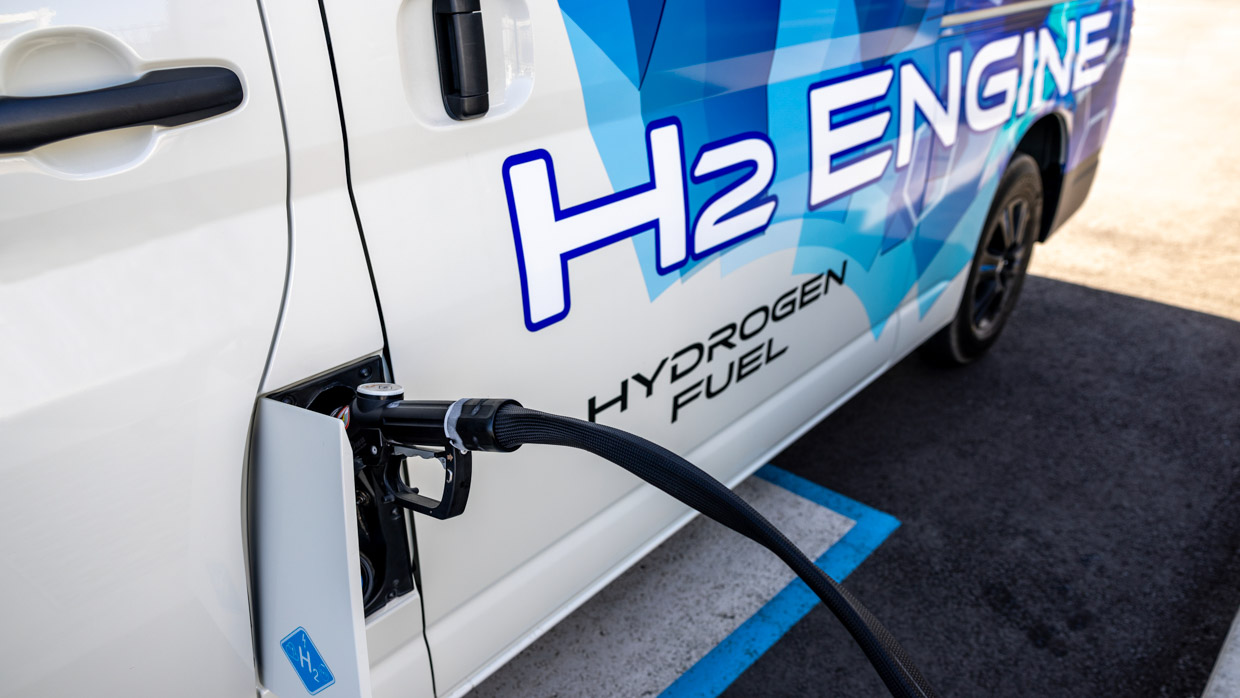
Toyota has expressed its desire to move through the development process quickly and also pointed to the vehicle’s close relation to other vehicles as a key advantage of the latest technology. The fact is that the brand can use existing know-how, processes, and supply chains, in order to reduce both development times and costs, whilst simultaneously lowering emissions.
Toyota has indicated that this could mean pricing that’s more in line with that of its hybrid models, if and when it goes into commercial production.
However, the flip side of these advantages is the significant investment necessary in hydrogen infrastructure to make it viable, which Toyota is advocating along with Hyundai and other major brands in Australia.
The automaker has also been open about the potential for this tech to find its way into other vehicles in the Toyota lineup like the Land Cruiser.
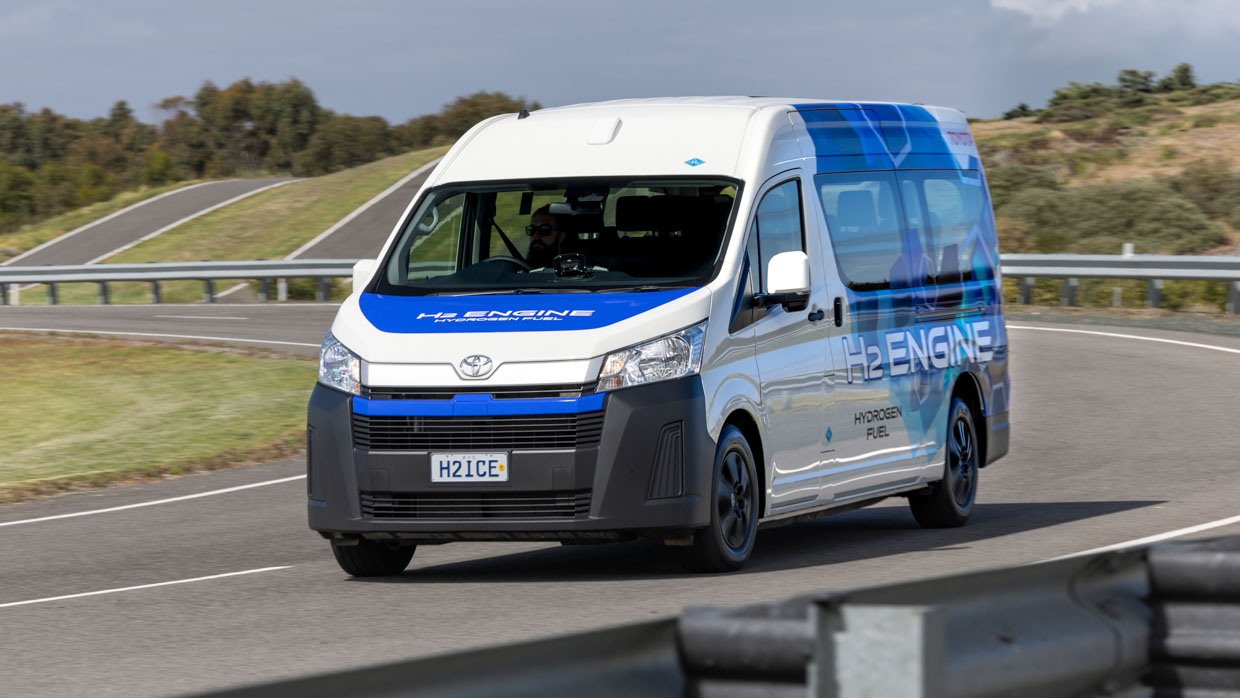
Toyota has said that the hydrogen Hiace prototype is not the final form of its hydrogen tech, but rather a preview of the beginning of its hydrogen-fuelled internal combustion journey. Having had the opportunity to experience this ‘beginning’, our interest has certainly been piqued.
Certainly, it delivered as ‘normal’ an experience as you can get for a commercial van, feeling very much like a regular ICE vehicle.
If Toyota can address some of the prototype’s shortcomings in range and power then certainly, depending on the price, a hydrogen-fuelled Hiace could provide all the benefits that its regular buyers are used to, with the emissions reductions that they desire.
About Chasing cars
Chasing Cars reviews are 100% independent.
Because we are powered by Budget Direct Insurance, we don’t receive advertising or sales revenue from car manufacturers.
We’re truly independent – giving you Australia’s best car reviews.
The estimate provided does not take into account your personal circumstances but is intended to give a general indication of the cost of insurance, in order to obtain a complete quote, please visit www.budgetdirect.com.au. Estimate includes 15%^ online discount.
^Conditions Apply
Budget Direct Insurance arranged by Auto & General Services Pty Ltd ACN 003 617 909(AGS) AFSL 241 411, for and on behalf of the insurer, Auto & General Insurance Company Limited(ABN 42 111 586 353, AFSL 285 571).Because we don’t know your financial needs, we can’t advise you if this insurance will suit you. You should consider your needs and the Product Disclosure Statement before making a decision to buy insurance. Terms and conditions apply.
Indicative quote based on assumptions including postcode , 40 year old male with no offences, licence suspensions or claims in the last 5 years, a NCD Rating 1 and no younger drivers listed. White car, driven up to 10,000kms a year, unfinanced, with no modifications, factory options and/or non-standard accessories, private use only and garaged at night.
^Online Discounts Terms & Conditions
1. Discounts apply to the premium paid for a new Budget Direct Gold Comprehensive Car Insurance, Third Party Property Only or Third Party Property, Fire & Theft Insurance policy initiated online on or after 29 March 2017. Discounts do not apply to optional Roadside Assistance.
2. Discounts do not apply to any renewal offer of insurance.
3. Discounts only apply to the insurance portion of the premium. Discounts are applied before government charges, taxes, levies and fees, including instalment processing fees (as applicable). The full extent of discounts may therefore be impacted.
4. We reserve the right to change the offer without notice.